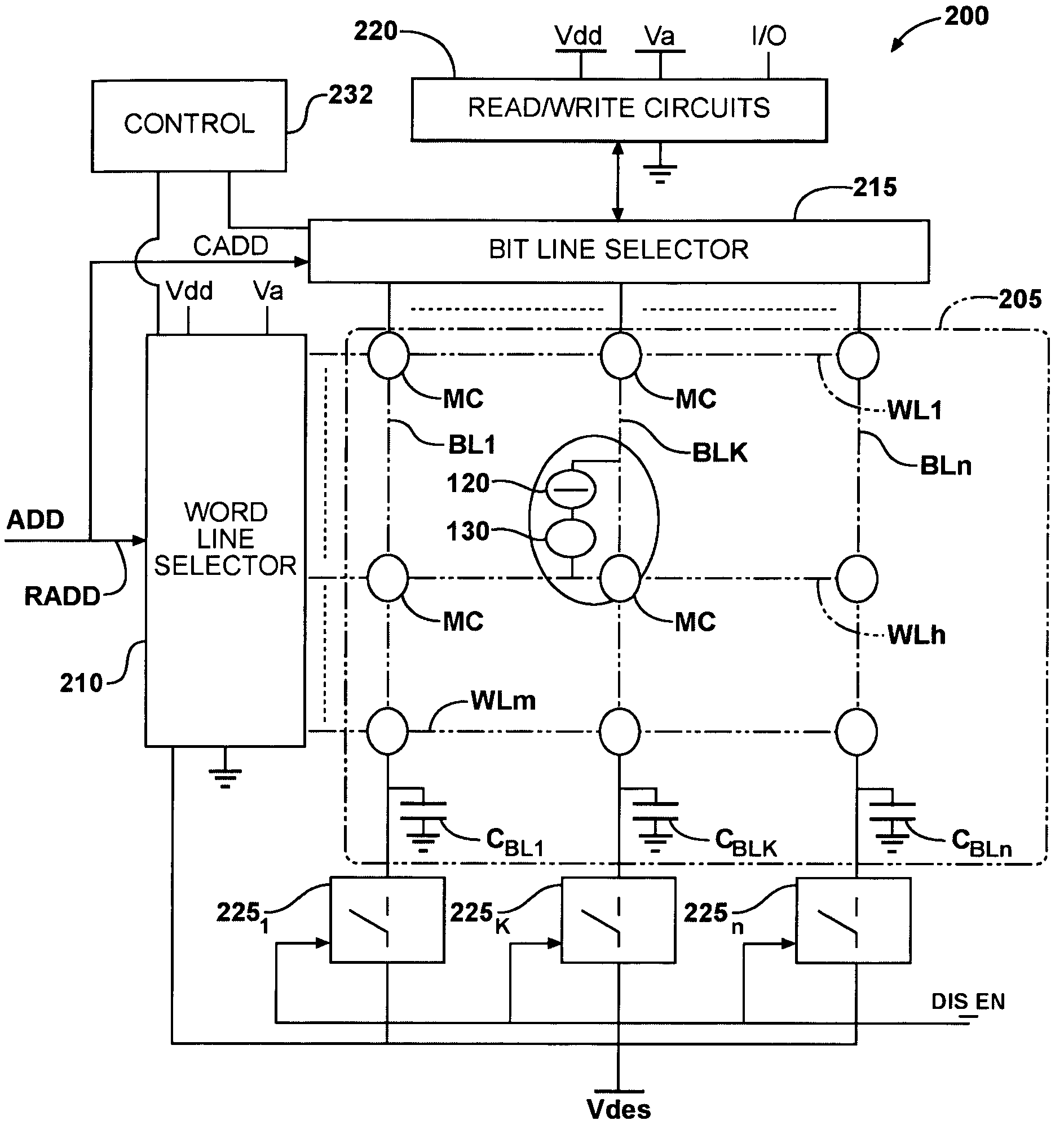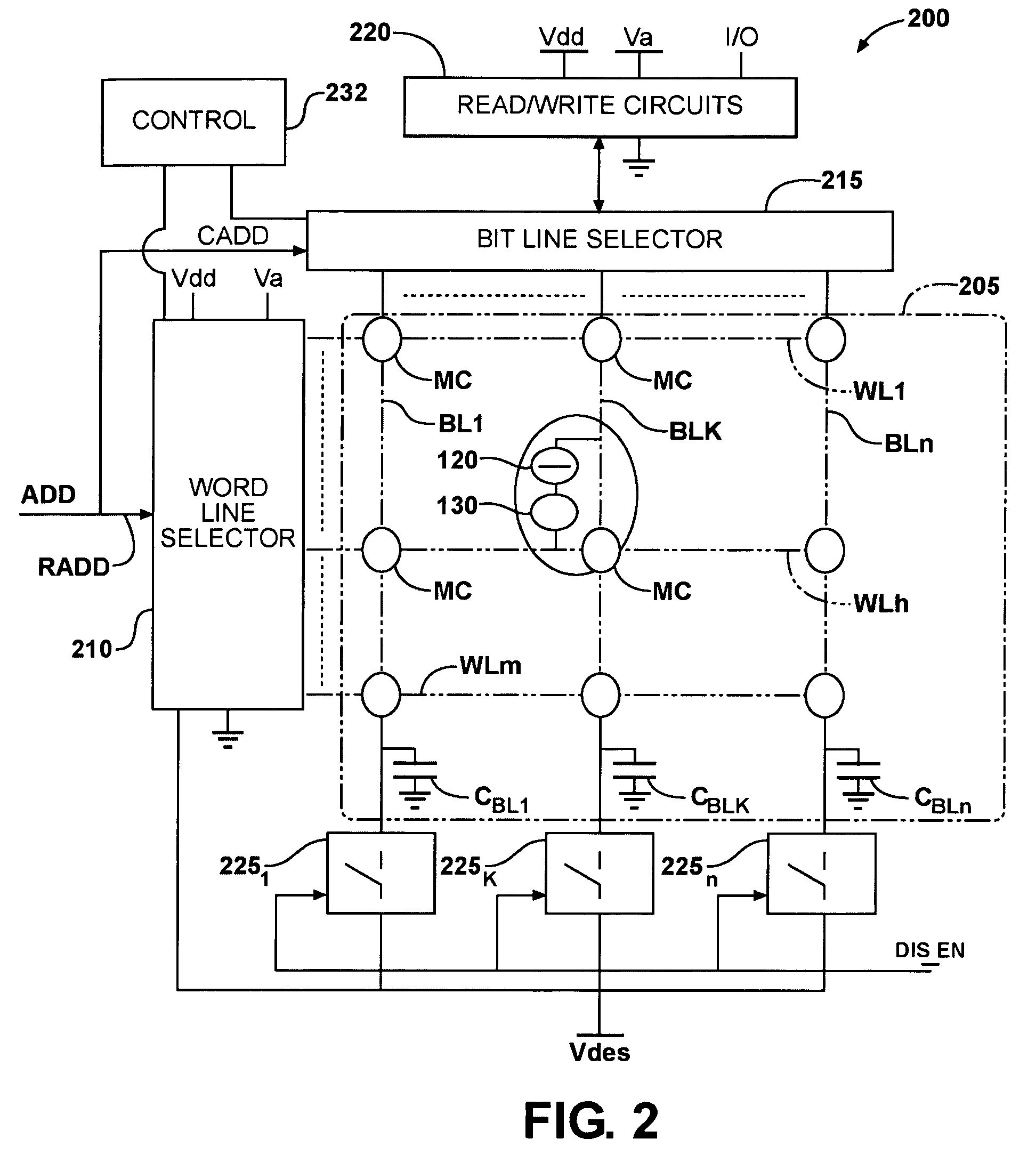Programmable resistance memory
a technology of programmable resistance and memory, applied in the field of electronic memory devices, can solve the problems of increasing the complexity of the peripheral circuitry that supports the memory array, the process of producing a given circuit in cmos technology, and the implementation of a comparable circuit. achieve the effect of simplifying circuit design, reducing supply voltage, and reducing static power consumption
- Summary
- Abstract
- Description
- Claims
- Application Information
AI Technical Summary
Benefits of technology
Problems solved by technology
Method used
Image
Examples
Embodiment Construction
[0030]Although this invention will be described in terms of certain preferred embodiments, other embodiments that are apparent to those of ordinary skill in the art, including embodiments that do not provide all of the benefits and features set forth herein, are also within the scope of this invention. Various structural, logical, process step, chemical, and electrical changes may be made without departing from the spirit or scope of the invention. Polarities and types of devices and supplies may be substituted in a manner that would be apparent to one of reasonable skill in the art. Process descriptions may include flowcharts that illustrate various steps taken in a process. Such flowcharts and accompanying discussion are not meant to be an exhaustive explanation of every step and every procedure in such a process. Rather, they are meant to provide a description with sufficient detail to enable one of ordinary skill in the art to practice and use the invention. In some embodiments,...
PUM
 Login to View More
Login to View More Abstract
Description
Claims
Application Information
 Login to View More
Login to View More - R&D
- Intellectual Property
- Life Sciences
- Materials
- Tech Scout
- Unparalleled Data Quality
- Higher Quality Content
- 60% Fewer Hallucinations
Browse by: Latest US Patents, China's latest patents, Technical Efficacy Thesaurus, Application Domain, Technology Topic, Popular Technical Reports.
© 2025 PatSnap. All rights reserved.Legal|Privacy policy|Modern Slavery Act Transparency Statement|Sitemap|About US| Contact US: help@patsnap.com



